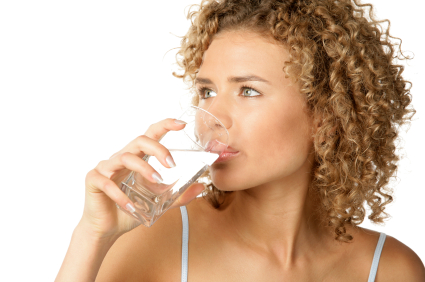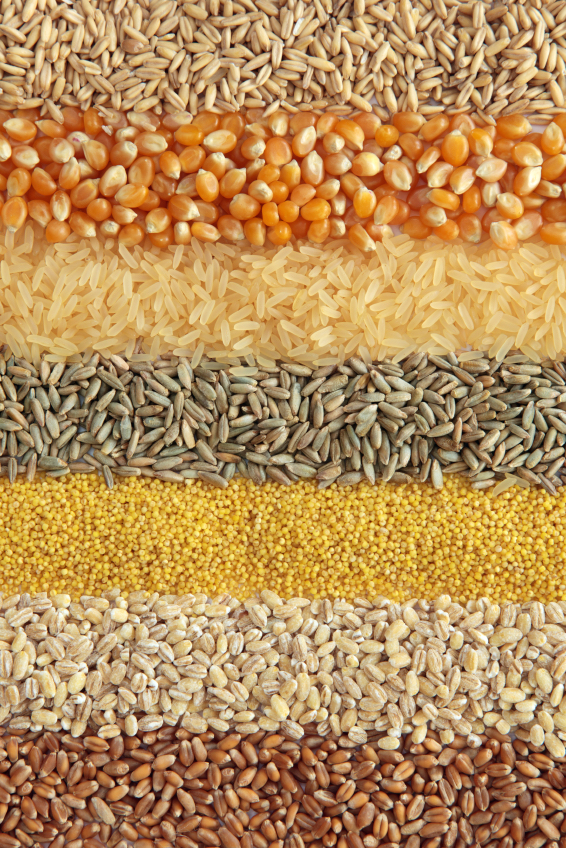Everyone tells you to drink more water– and it can be life threatening if you don’t get enough.
However, not only is it important to stay hydrated for health reasons, being properly hydrated also helps you lose weight.
Let me explain.
Being properly hydrated helps you stay energized during physical activity and throughout your day. The more active you are, the more calories you burn.
A hydrated body looks leaner. Why? Because when you’re dehydrated, you retain water. Yikes!
I bet the magazine rack has at least one headline screaming “Rev up your metabolism with this one trick!” Well, here’s a good one. If you drink enough water you help your body to metabolize properly. When you’re dehydrated, your metabolism can slow down. We all know what that means for weight loss.
So how much water should you be drinking?
It depends. The suggested guidelines for water consumption used to be sixty-four ounces per day. While it is still a good amount of water for some, others may need more. Here are some guidelines to help you decide:
Drink more fluids when you are in situations where your body loses water:
in warmer climates,
during more intense exercise,
at high altitudes.
Try to be more aware of your water intake:
if you’re the type of person who usually doesn’t notice thirst; or
when you are very busy and likely to forget to drink.
If you talk for a living. Water is lost though saliva.
Here’s five tips to increase your fluid intake:
1) Try naturally flavored waters. Flavored water and various other “hydrating” drinks usually have some type of sugar in them, pay attention to the calories on the label.
An alternative to buying flavored waters would be making your own. The possibilities are endless. Cucumber, mint, ginger, lemon, lime, strawberries, and raspberries are all examples of natural foods and herbs you can flavor your water with. Allow the fruits, vegetables, or herbs to soak in the water for a few hours for the flavors to release.
2) Eat foods that are mostly water each day. Include foods high in water like oranges, watermelon, yoghurt, grapefruit, pineapples, and broth-based soups when choosing your meals and snacks.
(3) Replace still water with sparkling water. If you discover sparkling water works for you, consider getting an in home soda machine. They take up very little counter space. You also save money and there are less bottles to recycle. This helped my husband Matthew go from not liking water to drinking plenty of it!
4) Add a glass of coconut water to your day. Coconut water is a great way to hydrate and get potassium. It’s used as a natural alternative to sports drinks, but you don’t have to be a professional athlete to reap the benefits of this popular beverage.
5) Have a hydrating beverage with every meal. Tacking a new goal on to an established habit is usually less daunting than trying to develop a new habit on it’s own. For example setting a goal of drinking a glass of sparkling water at dinner seems more manageable than a goal to drink 64 oz. of water every day.
How do you know when you’re getting enough water?
The best way to tell if you are hydrated is the color of your urine. Clear to pale yellow is ideal. Yellow to dark yellow means you need water, and if it looks like tea or beer you are dehydrated! Supplements can also cause urine to be dark yellow. So keep that in consideration.
Avoid allowing yourself to get “thirsty”. If you are getting a thirst signal then the body is already too low on water!
At first it may seem like you have to go to the bathroom a lot. This is normal when you up your water consumption. It is not uncommon to have to use the restroom every hour.
If you sit at a desk, this will encourage you to get up and move every hour. It also allows you to monitor your progress!
Have a question or a comment? Leave a note for me below. I love to hear from you!
Blessings!
Jennifer Ledford


